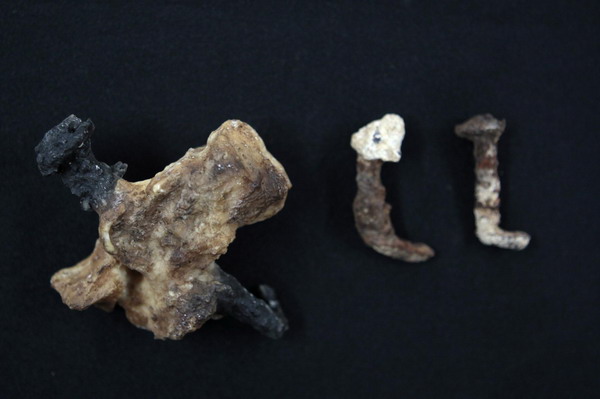Global General
Nails used to crucify Jesus may have been found
(Agencies)
Updated: 2011-04-12 16:42
 |
Large Medium Small |
|
 A nail covered in a piece of bone (L) is displayed alongside two nails in connection to Jesus, presented in a new documentary film, at Tel Aviv University April 6, 2011. [Photo/Agencies]
|
Either way, Jacobovici shows why those nails could have been used in a crucifixion, which was a common practice two thousand years ago. He then offers his theory about why they may have been used in the most famous crucifixion in history.
"If you look at the whole story, historical, textual, archaeological, they all seem to point at these two nails being involved in a crucifixion," he said. "And since Caiaphas is only associated with Jesus's crucifixion, you put two and two together and they seem to imply that these are the nails."
The Israel Antiquities Authority, which oversaw the Jerusalem excavation, said in reaction to the film's release that it had never been proven beyond doubt that the tomb was the burial place of Caiaphas. It also said that nails are commonly found in tombs.
"There is no doubt that the talented director Simcha Jacobovici created an interesting film with a real archaeological find at its centre, but the interpretation presented in it has no basis in archaeological findings or research," it said.
| 分享按钮 |